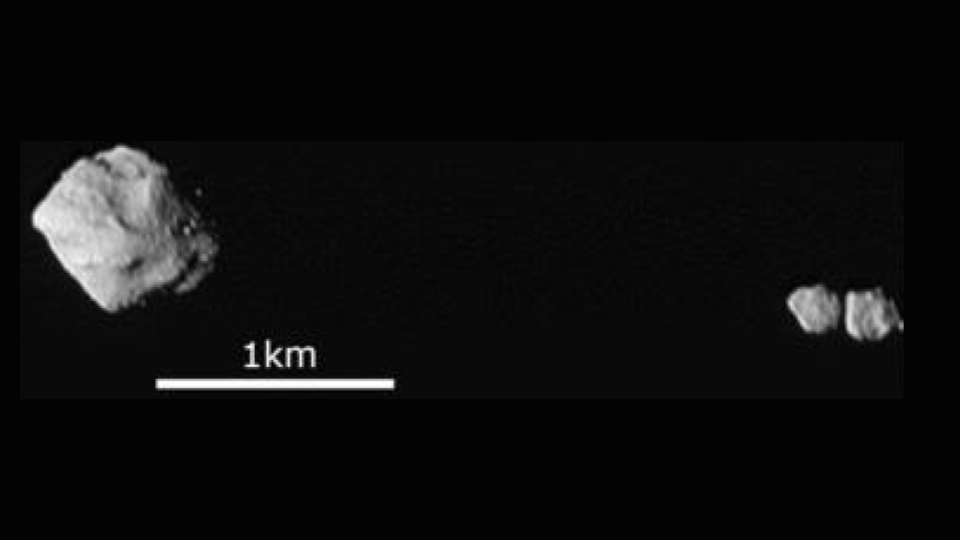
We often find ourselves saying that science moves at that rate of technology. With new telescopes and spacecraft we can get new views on the universe.
And some of them are weirdly unexpected.
Back in November 2023, the Lucy mission flew past the asteroid Dinkinesh on its way to Jupiter’s Trojan asteroid. This was meant to be a casual chance to get a bit of extra data on one more asteroid; data that would help us understand more about the frequency of rubble piles versus more solid objects, and improve on our census of what kinds of surface features and morphologies we can find in the asteroid belt. What we didn’t expect to find was a tiny snowman of a moon – a contact binary – peeking out from behind Dinkinesh.
The images from Lucy have now been analyzed, and in a new paper appearing in Nature, researchers describe how that tiny moon, now named Salem, might have formed from a landslide.
They note that there is a weird trough on the asteroid and suggest that a chunk of the asteroid shifted and dug a trough while flinging out bits and pieces as it made an escape. While some of the excavated material may have fallen back to the surface of Dinkinesh, the remaining material went on to form that little moon.
